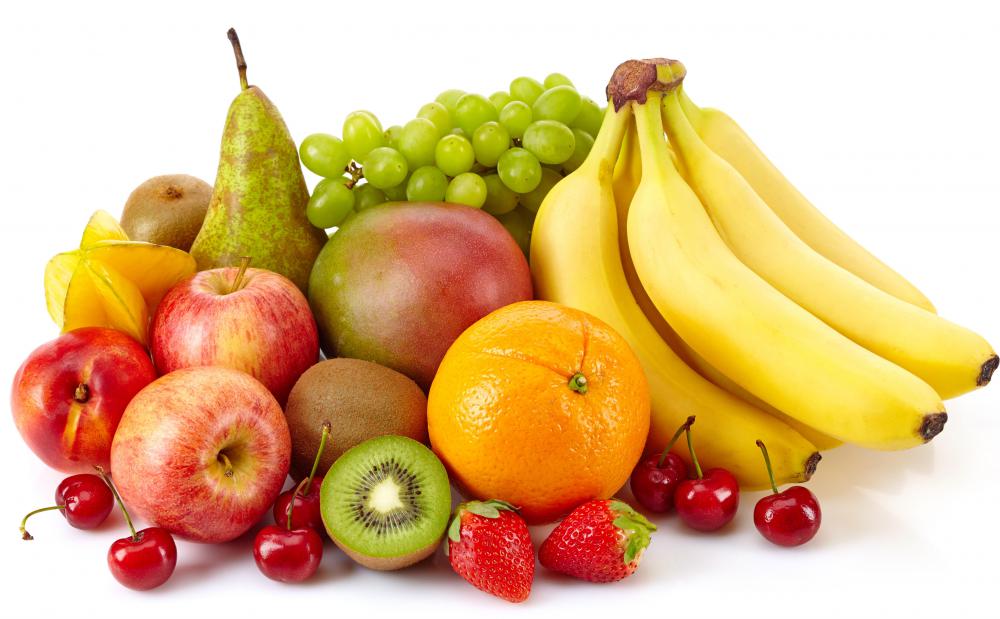At WiseGEEK, we're committed to delivering accurate, trustworthy information. Our expert-authored content is rigorously fact-checked and sourced from credible authorities. Discover how we uphold the highest standards in providing you with reliable knowledge.
What is the Nutritional Value of a Pear?
The nutritional value of a pear includes a small amount of vitamins C and K and the minerals potassium and copper. A medium-sized 5-ounce (148-g) pear contains about 90 calories, almost exclusively from sugar. Fiber is a significant part of the nutritional value of a pear, as one pear contains about 5 grams. A medium-sized pear contains less than 1 g of fat, about 1 g of protein, and is about 80 percent water.
A medium pear contains about 10 percent of the RDA for vitamins C and K. Fresh pears contain 5 percent of the RDA for the minerals potassium and copper. They also offer trace amounts of some of the B vitamins. A fresh pear is a good to very good source of dietary fiber. The nutritional value of a pear is enhanced by being eaten with the peel, as the peel contains most of the vitamin C and fiber.

The nutritional value of a pear often depends on the way in which it is served. Pears are often an ingredient in desserts and jams, which are generally high in calories and low in nutrients. The somewhat low nutritional value of a pear can be complemented by use in a more healthful salad or in combination with other fruits.
Canned pears are often packed alone or with other fruit. In many instances, canned pears are sold with added sugars, especially when they are packed in syrup. Even light syrups may add a significant number of calories. Canned pears contain a small amount of vitamin C and retain a range of minerals in low amounts.

As pears are mostly made of water, dried pears are a more concentrated source of nutrients, but also calories. About 3.5 ounces (100 g) of dried pears contains about 260 calories, nearly all of them from their 70 g of carbohydrates. This serving of dried pears provides of 10 percent of the RDA for vitamin C and about 25 percent of the RDA for vitamin K. It's also a good source of the minerals iron, potassium, and magnesium. This serving size would also offer nearly a third of the RDA for fiber.

Pears are grown in moderate climates around the world and are a major international fruit crop. Pear trees do not tolerate very cold or very hot weather. Almost two thirds of the world's annual pear crop is canned, and the rest is mostly sold fresh. A small percentage of the pear crop is dried.
AS FEATURED ON:
AS FEATURED ON:













Discuss this Article
Post your comments